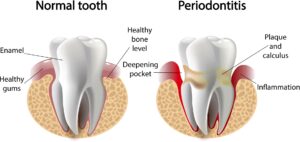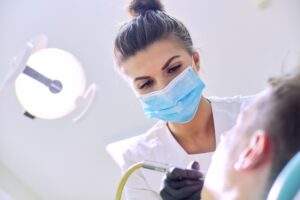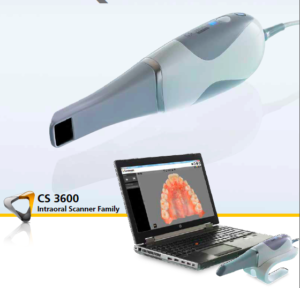Header logo
header top contact widget
Blog Archives
Recent Posts
Categories
Archives
- September 2024
- August 2024
- July 2024
- June 2024
- May 2024
- April 2024
- March 2024
- February 2024
- January 2024
- December 2023
- November 2023
- October 2023
- September 2023
- August 2023
- July 2023
- June 2023
- May 2023
- April 2023
- March 2023
- February 2023
- January 2023
- December 2022
- November 2022
- October 2022
- September 2022
- August 2022
- July 2022
- June 2022
- May 2022
- April 2022
- March 2022
- February 2022
- January 2022
- December 2021
- November 2021
- October 2021
- September 2021
- August 2021
- July 2021
- June 2021
- May 2021
- April 2021
- March 2021
- February 2021
- January 2021
- December 2020
- November 2020
- October 2020
- September 2020
- August 2020
- July 2020
- June 2020
- May 2020
- April 2020
- March 2020
- February 2020
- January 2020
- December 2019
- November 2019
- October 2019
- September 2019
- August 2019
- July 2019
- June 2019
- May 2019
- April 2019
- March 2019
- February 2019
- January 2019
- December 2018
- November 2018
- October 2018
- September 2018
- August 2018
- July 2018
- June 2018
- May 2018
- April 2018
- March 2018
- February 2018
- January 2018
- December 2017
- November 2017
- October 2017
- September 2017
- August 2017
- July 2017
- June 2017
- May 2017
- April 2017
- March 2017
- February 2017
- January 2017
- December 2016
- November 2016
- October 2016
- September 2016
- August 2016
- July 2016
- June 2016
- May 2016
- April 2016
- March 2016
- February 2016
- January 2016
- December 2015
- November 2015
- October 2015
- September 2015
- August 2015
- July 2015
- June 2015
- May 2015
- April 2015
- March 2015
- February 2015
- January 2015
- December 2014
- November 2014
- October 2014
- September 2014
- August 2014
- July 2014
- June 2014
- May 2014
- April 2014
- March 2014
- February 2014
- January 2014
- December 2013
- November 2013
- October 2013
- September 2013
- August 2013
- July 2013
- June 2013
- May 2013
- April 2013
- March 2013
- February 2013
- January 2013
- December 2012
- November 2012
- October 2012
- September 2012
- August 2012
- July 2012
- June 2012
Older Adults (80’s, 90’s, 100’s) Benefit By Dental Implants
Posted on Apr 25, 2023 by William J. Claiborne, DDS MS
Someone once told me, “Old age is always ten years older than the age you are at the time.” I get it. While a teenager may think of anyone over the age of 55 as “old,” aging in the U.S. today has taken a positive position within America’s population.
Proof of this is in how more and more people are living to be 100. Many of them are still sharp and spry. Although reaching the 100 age pinnacle was once a rare feat, it’s a growing trend. Today, there are nearly twice as many 100+ year olds in the U.S. than there were 20 years ago (nearly 90,000 now).
Reaching these elevated ages, of course, depends on factors like location, gender, lifestyle and genetics. Living a long life has evolved from lifestyle changes rather different than what was taken for granted in the 1950’s, for example.
Between 1900 and 2020, life expectancy in the U.S. rose by more than 30 years. Much of this can be credited to life choices, such as things like not smoking. Smoking, a leading contributor to heart disease, can decrease life expectancy by 10 years.
In 1965, 45% of Americans smoked. Now, knowing the health hazards to smoking, the number has declined to only 12.5% as of 2020.
Of course, Americans can also credit medical advances for the centenarian growth in population. The survivability of things like heart attacks and cancer has greatly increased, giving adults a longer lifespan.
As Americans realize their lifespan may well reach age 90, 100 or beyond, the resistance to having dental implants due to “old age” is becoming less of a factor.
Dental implants are the ideal tooth replacement system. Unlike dentures or ‘partials,’ dental implants are supported by the jaw bone, just as natural teeth. While dentures sit on top of the gums, dental implants restore biting strength and stability, giving back the look, feel and function of the teeth you once had.
Two decades ago, some “older” adults would deny themselves the benefits of dental implants, saying things like, “I’m too old to spend that amount of money on myself.” Yet, for my dental implant patients in their 80’s and 90’s, I never had one who didn’t feel it was one of the wisest investments they’d ever made.
Here’s why…
– Dental implants are designed to last your lifetime. They do not decay, need root canals or compromise neighboring teeth or bone structure.
– Because dental implants are positioned in the jaw, they recreate stimulation to the bone. This helps to preserve the bone’s mass, halting the pace of jaw bone shrinkage (known as resorption).
– Resorption is what causes changes in one’s facial appearance, aging one’s appearance far older than their actual age.
– Dental implants do not move or slip when eating, speaking or laughing. A denture is designed to fit the contours of one’s gum ridge; contours that exist at the time the denture is made. However, as resorption reduces bone height, the ridge that holds the denture flattens out over time. This is why a denture becomes ‘wobbly’ or ‘slippery.’
– Dental implant treatment is largely determined by the number of implants placed. In most cases, one implant can support more than one tooth. A full arch (all upper or lower) of teeth are typically supported by several strategically-placed implants.
– Unlike a crown-&-bridge, dental implants so not need the support of adjacent teeth. Therefore, it is not necessary to have teeth shaved down for crowning simply to serve as supports for a bridge.
When it comes to dental implants, there are many decisions and choices that can become confusing without the guidance of a dental specialist. For example, there are over 40 different implant systems.
Dental Implants are designed in a variety of shapes and sizes to accommodate various needs. For those who are missing all upper or lower teeth, for instance, some implant types can support a full arch of removable teeth while others support non-removable (or ‘fixed’) teeth.
As a periodontist for over 3 decades, our patients receive advanced skills in dental implant diagnosis and placement. Additionally, our Asheville periodontal dental office features some of the most advanced technology in the industry today. This includes computerized imaging that can lessen treatment needs, optimize comfort and speed healing.
If you feel you are too old to make this wise investment, check out some of the health benefits that dental implants provide:
• As the ‘arch’ (or ridge) flattens, the appliance is more apt to move while chewing. As the denture rubs against tender gum tissues when eating, sore spots form, which are difficult and slow to heal. And, when small seeds or nut particles become trapped between the appliance and gums, it can cause a piercing, painful sensation.
This discomfort and concern often prompts people to adjust their diets. The chewy, crunchy foods they once enjoyed tend to be bypassed for those that dissolve quickly with minimal chewing required. Unfortunately, these foods are typically lacking in the fiber, vitamins and protein necessary for a healthy diet.
• The gum-colored base of dentures or partials that hold the replacement teeth is made of a porous material. This means there are tiny holes in the base. In the mouth, a denture sits in a warm, dark, moist environment – perfect for bacterial growth. These holes become living spaces to oral bacteria, which thrive and breed at a rapid rate. Bad breath and increased risk of pneumonia are actually some of the lesser problems that can occur.
Additionally, oral bacteria can create havoc throughout the body. It is a known contributor to a long list of serious health diseases and conditions. These include some cancers, stroke, heart disease, diabetes, arthritis, Alzheimer’s disease, pre-term babies and many more.
• The insecurity of a denture that may move when eating causes some people to avoid social gatherings. The fear of embarrassment can be a deterrent to involvement with friends and family. This places the individual at a disadvantage, as research shows that socially active seniors age more slowly than those who avoid social interactions.
If dental fear has prevented you from looking further into dental implants, please know that we have a reputation for respect, a gentle touch, and compassionate care. Additionally, we offer Oral sedation as well as I.V. sedation (also known as ‘twilight sleep’). These are administered safely by a doctor of anesthesia who monitors patients with advanced safety equipment.
Also, financing can be easy through monthly payment plans. Most are interest-free with no down payment required.
To schedule a consultation appointment, call 828-274-9440. Also, get to know more about dental implants at: DrClaiborneDentalImplants
Sources:
https://www.sciencedaily.com/releases/2014/10/141007144514.htm
https://greatergood.berkeley.edu/article/item/how_social_connections_keep_seniors_healthy
Nothing To Fear To Accomplish Healthy Smile Here
Posted on Apr 16, 2023 by William J. Claiborne, DDS MS
As a dental specialist, I find that many people are unfamiliar with exactly what a periodontist does. Yet, when they are recommended to see me (typically by their general dentist), it is because they need specialized care that falls under our unique set of skills.
A periodontist has advanced skills to help patients with a variety of needs that involve the gum tissues. These include:
– Treatment of all stages of gum disease (gingivitis, pregnancy gingivitis, periodontal disease, periodontitis)
– Reshaping gum tissues for esthetic enhancement (crown lengthening, gingivectomy for ‘gummy smiles’, repairing areas of gum recession)
– Diagnosis and placement of dental implants
– Treatment of lesions or cysts in oral tissues
Let’s begin with gum disease.
Because the majority of care I provide has to do with the treatment of all stages of periodontal disease, it may be helpful to understand how this develops. Although many people delay or avoid regular dental care (mistakenly thinking “if nothing hurts, then nothing must be wrong”), I have a close-up view of its destructive nature. Its formation creates cavities, periodontal (gum) disease, and leads to eventual tooth loss.
Even people who are committed to a regimen of thorough at-home oral hygiene (twice-daily brushing, daily flossing), can be doing an insufficient job of removing the daily buildup of plaque. Plaque is a sticky film of bacteria that accumulates in the mouth. When not thoroughly removed, it can harden into a mass that attaches to the base of, or in-between, teeth.
In the form of tartar, this cement-hard mass of bacteria cannot be brushed or flossed away. Once tartar forms, it can only be removed by a dentist or hygienist using special tools. Without removal, it will continue to amass and attack gum tissues, working its way beneath the gum line.
Below the gums lie the support system for natural teeth, consisting of tissues, ligaments and bone. When the bacteria reach an uncontrollable level, they become infectious. As these infectious bacteria accumulate further, symptoms of gum disease become more apparent, such as tender or swollen gums or seeing blood in the sink when brushing teeth. Breath odor may be bad on a regular basis.
As symptoms worsen, the gums become red with infectious and loosen their grip around the base of teeth. The gums may become spongy and pus pockets may form. Breath odor at this point is persistently putrid. Eventually, the structures that support teeth are compromised and teeth may loosen. Gum disease is the leading cause of adult tooth loss in the U.S.
Research has found that certain strains of oral bacteria from gum disease create reactions in the body that can trigger systemic inflammation. Thus far, research findings have shown a correlation between periodontal disease bacteria and some cancers (including pancreatic and lung), Alzheimer’s disease, pre-term babies, heart disease, stroke, diabetes, arthritis and erectile dysfunction (ED).
As if all that weren’t bad enough, one study suggests that gum disease relates to a reduction in one’s quality of life: “Periodontal disease has been linked to lower quality of life.” “Quality of life encompasses several domains, including psychological functioning and social relationships among others. Oral health-related quality of life has been shown to be reduced in patients with periodontal disease.” (https://www.hindawi.com/journals/prm/2017/5491923/)
While estimates show about 75 percent of American adults have some degree of dental fear or anxiety, over 47 percent have some level of periodontal disease. As a periodontist, both are alarming numbers. Nearly half our nation is walking around with a potentially life-threatening disease in their mouths.
Treating this may sound like it would be pretty intimidating. However, Although there are many treatments offered and at various levels, our main goal is to provide patients with comfortable and positive experiences at every visit. One way we accomplish this is through the advanced technology featured here in our Western North Carolina periodontal dental office. We feature some of the most advanced in dentistry, much of which is not available in dental offices elsewhere. Some of these features include:
LANAP With PerioLase MVP 7: Laser-Assisted New Attachment Procedure is an advanced protocol that efficiently and effectively treats advanced gum disease with the added advantages of a dental laser. This offers a non-surgical alternative for patients with moderate to severe periodontal disease. LANAP treatment leaves very little discomfort and has a quick recovery time. It has also been found to stimulate bone regrowth in damaged areas.
3D Cone Beam Imaging: Ideal for diagnoses and treatment planning, these images provide a clear view of the upper and lower jaw, used for: intricate review of endodontics; periodontics; orthodontics; implantology: TMJ; and prosthodontics, as well as dental and maxillofacial surgery. Because cone beam radiographs show sagittal, axial, and coronal planes, locating and tracking nerve canals optimizes implant placement. The process is quick, painless and at minimal levels of radiation.
CareStream Cone Beam Computer Tomography Imaging: This enhanced tomography works with 3D imaging for exceptional detail and range.
CS 3600 Intraoral Scanner: Rather than make impressions with bulky, goopy trays, this scanner quickly and comfortably captures digital impressions accurately and easily for creating precision models or appliances (crowns, inlays, onlays, bridges, orthodontic appliances and aligners, custom abutments). The scanner can also reach difficult–to–access areas in the patient’s mouth for superior results with improved patient comfort.
Computerized Dental Implant Placement: This advanced system for pre-surgical positioning of dental implants uses a 3D model of the patient’s jaw. Once the implant type is selected, a template is developed for optimal treatment success, even for complex cases.
In addition, we offer a unique environment for comfort. We understand how dental fear or anxiety can cause people to delay or avoid having dental treatment, sometimes for decades. We believe that every patient deserves respect, a gentle touch and knowing they are in a “lecture free” zone. For those who have high fear levels, we offer several sedation options, including oral and IV sedation.
Oral sedation is a pill that helps patients relax. It also has an amnesiac effect, leaving most with little or no memory of treatment afterward.
I.V. sedation (also known as ‘twilight sleep’) places the patient in a deeper sleep state and erases memory of the procedure. It is administered by a doctor of anesthesiology for optimal comfort and safety. In our Asheville office, anesthesia is overseen by a Medical Doctor (MD) who is a board certified Anesthesiologist.
With both sedation options, patients are closely monitored with advanced safety equipment throughout treatment.
I hope I’ve given you a helpful and positive picture of what a periodontist does and how he/she can help you with some challenging needs; all the while keeping you comfortable, minimizing treatment time, and shortening treatment time.
Although most of our patients are referred to us by other dentists and dental specialists, a referral is not required for accepting a new patient. Call 828-274-9440 if you feel we can make recommendations for your specific needs or provide helpful information.
Heightened Oral Cancer Risk From HPV Virus
Posted on Apr 10, 2023 by William J. Claiborne, DDS MS
 April is National Oral Cancer Awareness Month. There is good reason that an entire month has been devoted to this dire health problem. With the growing statistics surrounding HPV and its ties to Oral Cancer, especially amongst adolescents, the need for education and clear, straight-forward discussions are needed.
April is National Oral Cancer Awareness Month. There is good reason that an entire month has been devoted to this dire health problem. With the growing statistics surrounding HPV and its ties to Oral Cancer, especially amongst adolescents, the need for education and clear, straight-forward discussions are needed.
First, know that the human papilloma virus (HPV) is the nation’s most common sexually transmitted virus. At least 50% of sexually active people will have genital HPV at some time in their lives. While awareness of HPV risk is gaining ground, it is not commonly known that the virus can spread through oral sex and linked to diseases in the mouth.
An estimated 20 million Americans are infected with the human papilloma virus. HPVs, which are a group of more than 200 viruses with 40 types, can easily spread through direct sexual contact, including vaginal, anal, and oral sex.
Virtually all cases of cervical cancer are caused by HPV. In the 1980’s, HPV was attributed to around 16% of mouth and throat tumors. Within two decades, that figure had increased to nearly 75%. According to the World Health Organization (WHO):
“Almost all cervical cancer cases (99%) are linked to infection with high-risk human papillomaviruses (HPV), an extremely common virus transmitted through sexual contact.”
A particular type of HPV, the high risk HPV 16, is found in cancer of the tonsils, vocal cords, base of the tongue, and oesophagus. A low risk HPV that causes genital warts may also be found in some cases of cancer of the vocal cords.
Oropharyngeal cancers include malignancies of the tonsils, soft palate, base of the tongue and throat. HPV is commonly transferred through genital contact but HPV spread through oral sex is what increases the risk of mouth and throat cancers.
Another fact that is not widely known is the higher risks for males. Oral cavity and oropharyngeal (throat) cancers are twice as common in men than in women. HPV-related oropharyngeal cancers occur more often in men. The development of oropharyngeal cancer due to HPV is about three times less prominent in females than in men of the same age.
About 10% of men and 3.6% of women have Oral HPV, which is transmitted through sexual or skin-to-skin contact. Oral HPV can spread through deep tongue kissing and oral sex. In men, symptoms may appear in the form of warts, growths, lumps, or sores on the penis, scrotum, anus, mouth, or throat.
Other factors that can heighten the risk that HPV will develop into cancer include:
• Smoking or chewing tobacco (increases oropharyngeal cancer risk)
• Weakened immune system
• Having many children (increases cervical cancer risk)
• Long-term oral contraceptive use (increases cervical cancer risk)
• Poor oral hygiene (increases oropharyngeal cancer risk)
• Chronic inflammation
The spread of HPV is said to be at an epidemic level. Thus, the Centers For Disease Control & Prevention (CDC) which has prompted the recommendation for HPV vaccinations for ages 11 – 12 year olds. Being vaccinated before becoming sexually active can lower one’s risk of being infected by HPV types and several types of cancers associated with HPV.
Regardless of age, vaccines are available, which many doctors encourage for sexually active patients who have multiple partners. For those who are not vaccinated against HPV, condoms can lower the risk of developing HPV-related diseases, such as genital warts and cervical cancer.
However, HPV can infect areas that are not covered by a condom. Therefore, the risk remains high for many even with the use of condoms. Condoms do not give complete protection against HPV transmission, which can mean potential infection of areas not covered.
When it comes to oral cancer, alert us immediately if you experience any of the following symptoms that do not clear up within two weeks:
• Have difficulty swallowing
• Have lumps in the neck
• Experience pain in the mouth or ear
• Notice unusual spots inside the mouth (including the tongue) or on the lips
A periodontist is a specialist in the treatment of oral gum tissues and in the placement of dental implants. This dental specialist understands the unique health and risks to gum tissues.
In our Asheville periodontal dental office, we also offer some of the industry’s most advanced digital technology available. These features often minimize the extent of treatment needed, speed healing, and enhance comfort.
We also offer oral and IV sedation for many procedures. These sedatives are safely administered by professionals who are specifically trained in the administration of anesthesia. Here, patient safety and comfort are always priorities.
If you have ANY symptoms that may indicate oral cancer, do NOT wait until your next check-up to have these evaluated. Call 828-274-9440 for an immediate appointment.
Sources:
https://www.who.int/health-topics/cervical-cancer#tab=tab_1
https://www.ncbi.nlm.nih.gov/pmc/articles/PMC4544688/
https://pubmed.ncbi.nlm.nih.gov/20116657/
https://www.cancer.gov/about-cancer/causes-prevention/risk/infectious-agents/hpv-fact-sheet
https://www.colgate.com/en-us/oral-health/hiv-aids-and-stds/dental-care-hpv-and-men#


